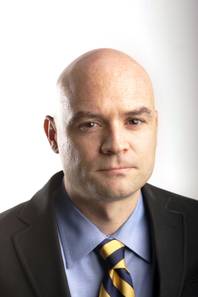Thursday, Aug. 23, 2012 | 2 a.m.

J. Patrick Coolican
I’m the kind of politics junky who measures out his life in presidencies. I can’t tell you what I had for supper two nights ago, but I vividly remember Pat Buchanan’s 1992 Republican National Convention speech. (His real mistake wasn’t radical culture warmongering, it was pushing President Ronald Reagan out of East Coast prime time.)
So, as I watched President Barack Obama on Wednesday at Canyon Springs High School in North Las Vegas, I thought about four years ago. I sort of remember that my apartment off Boulder Highway, Coral Gardens, had just received a splash of brown and hunter green paint and a new name: Canyon Pointe. More vividly, I remember cocktail waitresses caucusing for Hillary Clinton.
And because I was so busy covering one of the most interesting campaigns in recent history, I wasn’t paying close enough attention to the fact that the world was collapsing, even though that collapse was intimately intertwined with the campaign.
By early 2008, Nevada’s foreclosure crisis had been pummeling the housing market for nearly a year, first with fraudulent and then subprime borrowers, stalling out growth and pushing down home prices. Nevada’s state government decided the best approach would be to mimic a deer in headlights, though to be fair, there was probably not much elected officials could have done.
From September 2007 to September 2008, the unemployment rate in Nevada had jumped from 4.9 percent to 6.9 percent, and it was rising more every month. It would become rapidly clear, though for most of us only in retrospect, that our economy was too dependent on growth and development, on construction workers building homes and stores and casinos for other construction workers.
The national economy had its own problems, though they were linked to ours. Some on Wall Street made big, reckless bets that home prices would never decline. The troubled Wall Street banks were so big and so intertwined that their collapse would have destroyed the economy.
Even though the government stepped in to stabilize the system, the economy still seized up. Only last year did we learn that the American economy saw an annualized decline of an astounding 8.9 percent in the fourth quarter of 2008, far worse than original estimates. By the time Obama took office, the private sector was losing 700,000 jobs per month, with state and local governments soon to follow with their own layoffs.
What should have been clear at the time was that there would be no quick recovery. The recession was the result of a financial crisis. Here are economists Carmen Reinhart and Kenneth Rogoff, experts on financial panics, writing in Newsweek in March 2009: “The recessions that follow in the wake of big financial crises tend to last far longer than normal downturns, and to cause considerably more damage.”
They were right. Homeowners were deep in debt and underwater on their homes and so were reluctant to spend. It was worse in Nevada, which was heavily dependent on construction, and on people and businesses spending disposable income on the Strip.
Once the job losses hit, more foreclosures would follow, and the cycle continued, only abating somewhat in the past year or so.
We can argue all day long about what caused all this, but you can’t deny that this is what was happening four years ago.
In amnesiac America, it seems to me that recalling this recent history — and reflecting on the mess that Obama inherited — is a valuable exercise.

Join the Discussion:
Check this out for a full explanation of our conversion to the LiveFyre commenting system and instructions on how to sign up for an account.
Full comments policy